Acrylic Painting on Canvas Team Bonding Art Jamming Singapore Visual Arts Centre

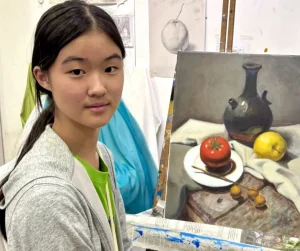






















Yeo Hoe Koon
Oil on Canvas
64 x 89.5 cm
Price Range: $16,000 - $20,000
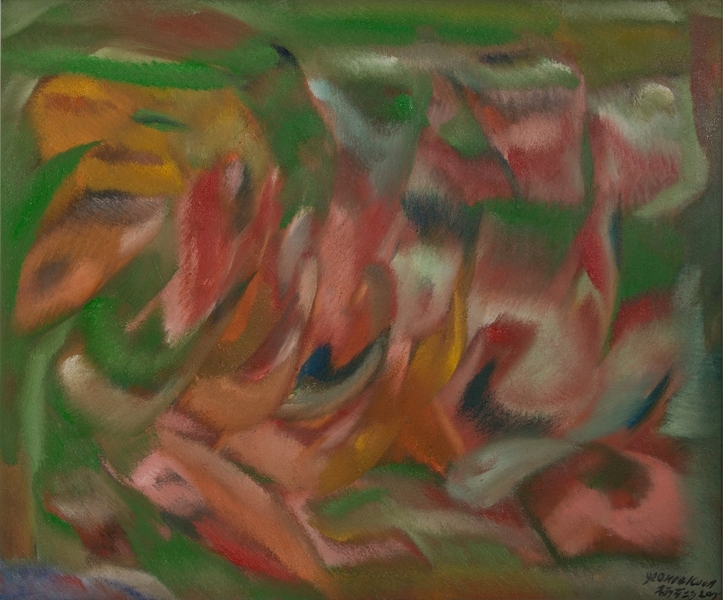
Yeo Hoe Koon
Oil on Canvas
101 x 123 cm
Price Range: $26,000 - $32,000
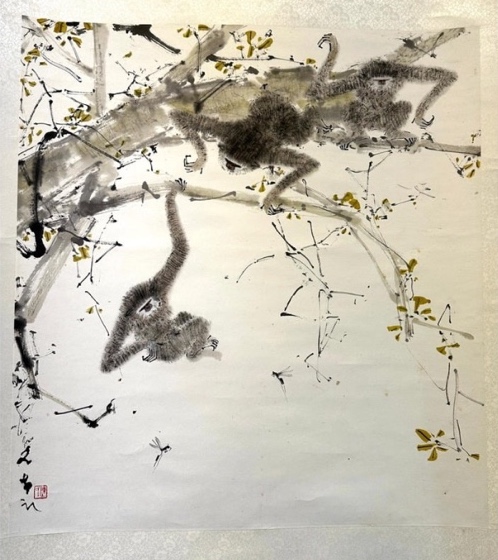
Chen Wen Hsi
Chinese Ink and Color on Paper
50 x 54cm
Price Range: SGD $42,000 - $50,000

Cheong Soo Pieng
Red Tone
61 x 91.5cm
Price Range: SGD $108,000 - $138,000
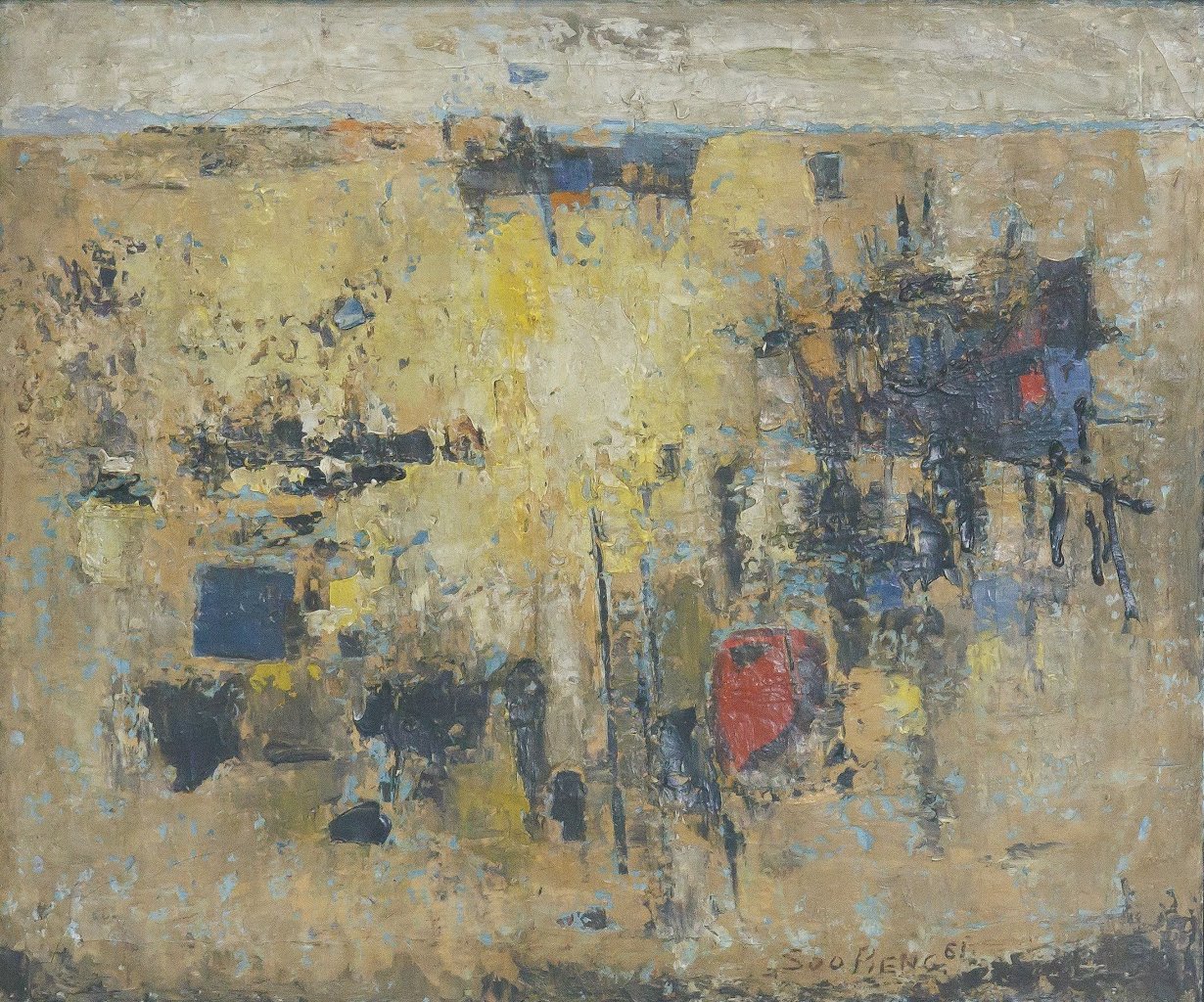
Cheong Soo Pieng
Abstract Landscape
50 x 61cm
Price Range: SGD $95,000 -$128,000
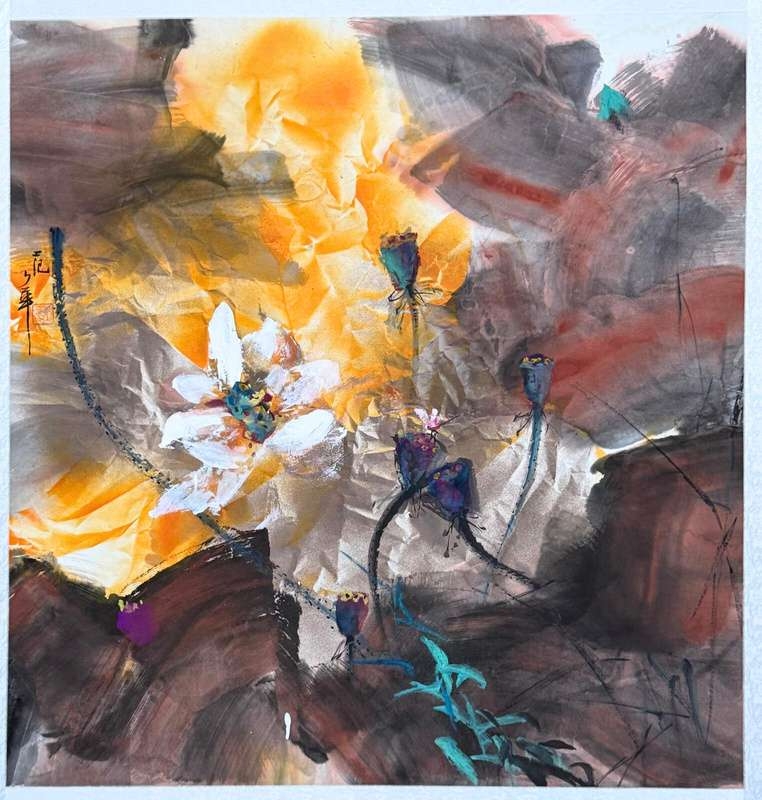
Fan Shao Hua
Chinese Ink and Colour on Paper
100 x 100cm
Price Range: SGD $9,800 - $14,800
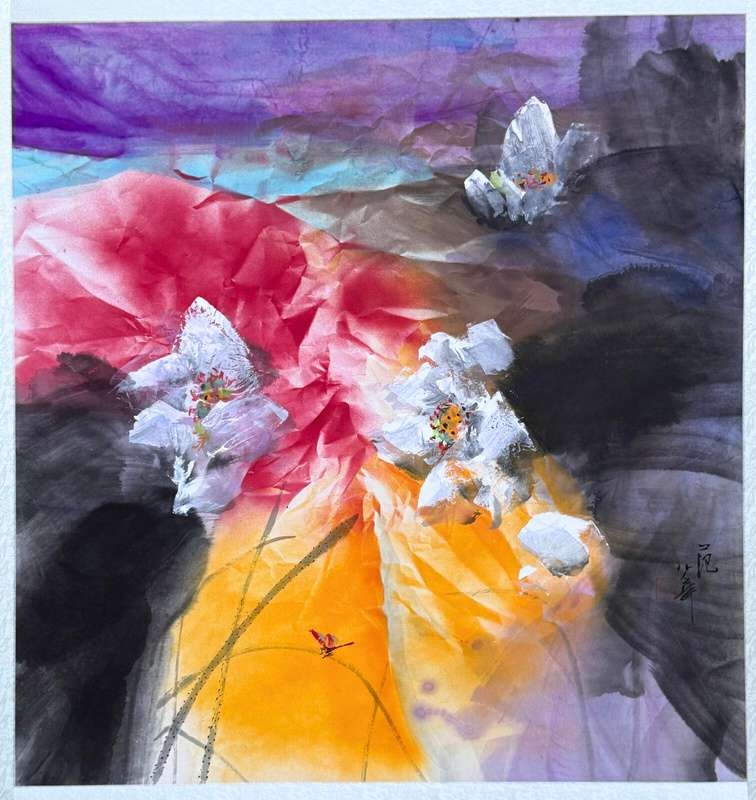
Fan Shao Hua
Chinese Ink and Colour on Paper
100 x 100cm
Price Range: SGD $8,800 - $13,800
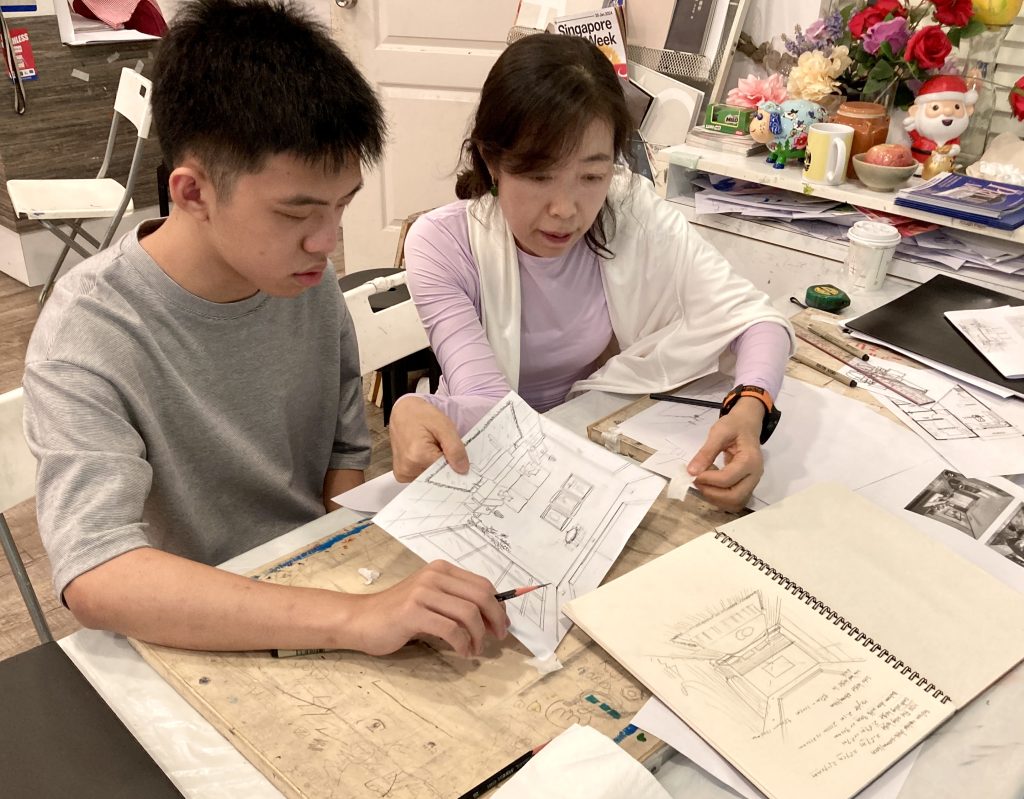
Our student learning interior design and freehand rendering in our interior design course in Singapore
As the economy and society develop rapidly, people’s material lives have greatly enriched, leading to an increased demand for improved living spaces. When individuals buy houses and receive keys, they often wish to engage an interior designer to create a beautiful space that reflects their preferences. Everyone desires to design their own preferred style, conveying their requirements, concepts, styles, and imaginations to the designer, enabling the interior designer to fulfill their dreams and create a space they adore.
When you find an interior design service, sharing your ideas and placing all hopes on them, expressing your preferred interior design style—be it retro-classic, European luxury, or rustic—is common. You discuss how to arrange the home, the colors of walls, lighting fixtures, and more. If the designer swiftly and succinctly translates your suggestions into visual representations during a short conversation, you might affirm their interior design prowess and have strong confidence in their abilities on interior designing. This highlights how crucial an interior designer’s hand-drawing skills, line representation capabilities, and spatial summarization abilities are. The ability of an interior designer to do interior design sketch by hand serves as a crucial means to communicate and secure interior design projects from clients.

Student is learning one point perspective interior design freehand rendering skills
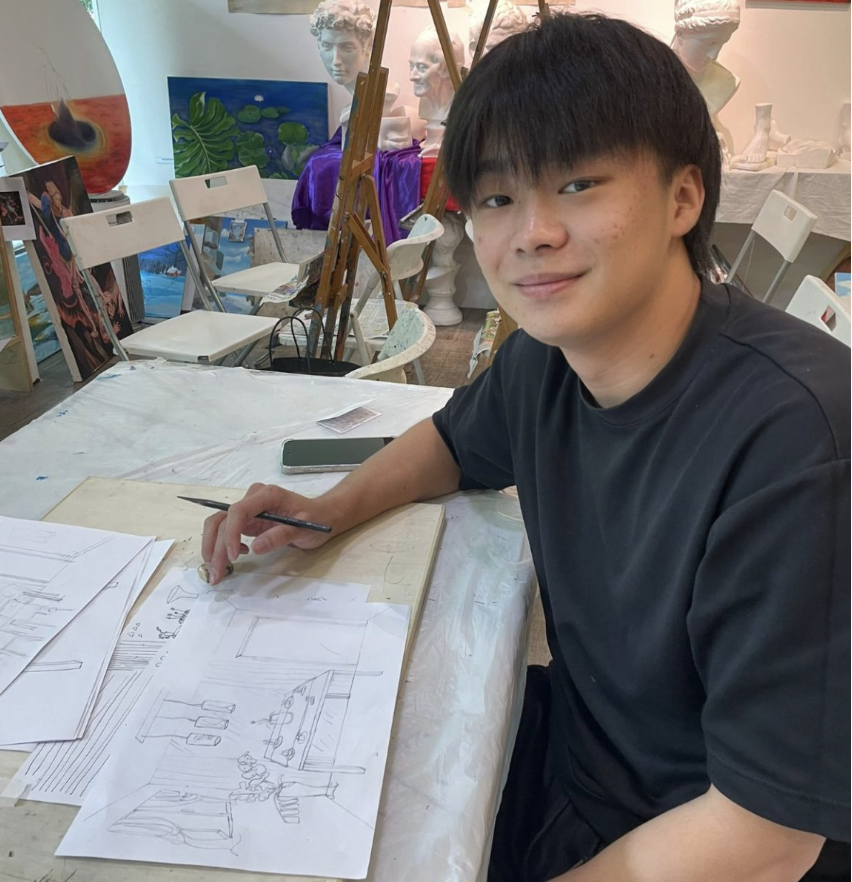
Our student learning interior design home furnishing and arrangements


With the rapid advancement of technology, interior designers primarily use computers for drawing of interior design. Original Interior Design & Freehand Rendering Sketching creations have been forgotten by most interior designers. However, in recent years, hand-drawing interior design sketch as the simplest way for interior designers to explore spatial creativity that has gradually gained attention. Nevertheless, it’s essential to note that the most crucial aspect for a interior designer is still the interior design itself—don’t blindly assume that hand-drawing equals design; rather, hand-drawing serves the purpose of design.
Learning contents within Interior Design & Freehand Rendering Sketching course:

Tools & materials provided within this Interior Design & Freehand Rendering Sketching Course:
Drawing & sketching paper, Watercolor paper, pencils, erasers, technical pens, markers, Watercolor pens, Watercolor paints, rulers, drawing boards, etc.

Student is drawing freehand rendering interior design floorplan

Get a Certificate of Completion/Achievement of Interior Design & Freehand Rendering Course with us upon completing 10 sessions.

随着经济社会的飞速发展,人们的物质生活极大丰富,人们对居住的空间要求也相应提高。当人们买到屋子拿到钥匙时,都希望请一个室内设计师来为自己设计,打造一个美丽的空间,每个人都想要设计出自己喜欢的风格,把对设计的要求、概念、风格和想象力告诉设计师,让室内设计师为自己完成梦想。打造出自己心怡的空间。
那么当你找到一位设计师时,你把你的想法告诉设计师,把一切希望都寄托在设计师身上,你告诉设计师你喜欢的风格,是复古经典式、欧式奢华还是田园风格;家居怎么布置,墙壁色彩灯饰等等,如果设计师听了你的建议后,在短短的一段谈话时间里,设计师把你的要求能迅速简练地表现在纸上,把你的概念迅速勾画到画面里,那么你是不是对这个设计师的设计水平有些肯定,你是不是会非常相信这位设计师的能力。从而看出一个设计师的手绘技巧、线条表现能力、空间概括能力是多么的重要。设计师的手绘能力是一个跟客户沟通拿到设计项目的敲门砖。
伴随着科技的飞速发展,设计师绘图首选手段就是电脑,原创的手绘被大多数设计师遗忘,近年来,手绘作为设计师进行空间创意最简便的方式又逐渐被大家所重视,但大家要注意的是设计师最重要的还是设计,不要盲目认为手绘就是设计——手绘为设计而服务。
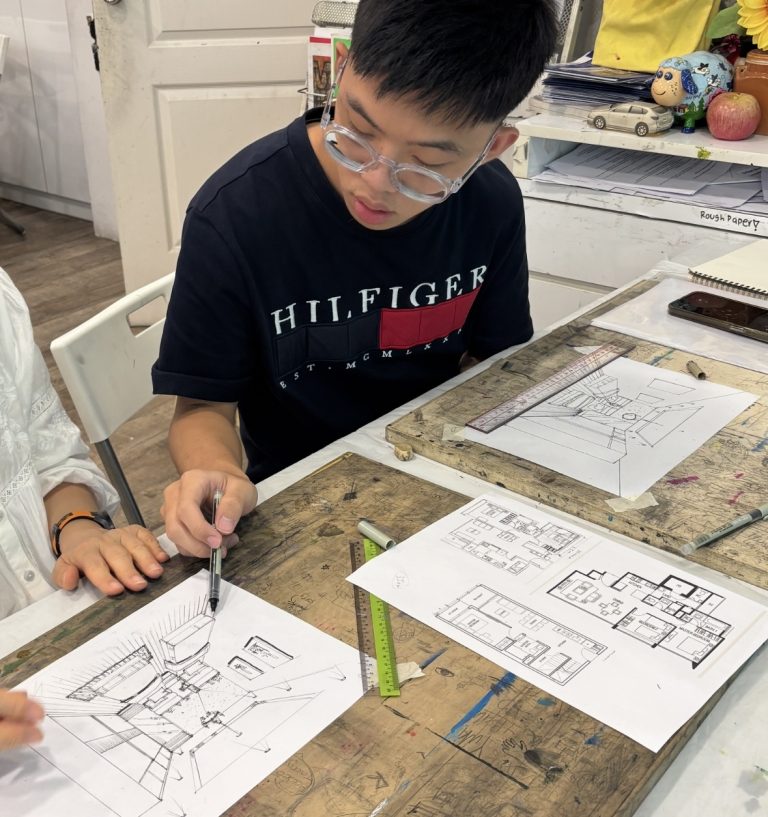
学生在聆听专业老师讲解室内设计手绘图技巧

手绘室内设计效果图需要的工具:
素描纸、水彩纸、铅笔、橡皮、针管笔、马克笔、水彩笔、水彩颜料、尺、绘图板等
手绘不像电脑绘图可以通过短期培训就可要掌握,手绘是一种绘画基础功训练。作为设计师,在方案构思与创作过程中,用手绘的方式进行推敲表达会比电脑更为深入、生动、便捷;现在人们在委托设计师为自己设计时,也希望设计师能手绘设计草案,方便讨论和更改。电脑画出来的效果有时会显得生硬。手绘效果图会更加有韵味,具有更广阔的想象空间。所以手绘是对于室内设计师而言很重要,手绘室内设计图并不难,只有掌握原来和技巧,慢慢训练,会有非常好的成绩
下面我们先看看室内设计师的手绘效果图要学什么?
一)学习住宅室内设计,学习客厅、厨房、卧室、卫生间、书房等室内设计效果图绘画技巧;
二)学习商业空间设计,如酒店大厅、酒店房间、理发店、服装店等效果图绘画技巧
上完10堂专业室内设计和手绘课程, 即可领取证书

Address:
10 Penang Road, #01-02 Dhoby Ghaut Green,
Singapore 238469
Exit from Dhoby Ghaut MRT Station Exit B and turn left, we are there in 30m!

Address:
AZ@Paya Lebar, 140 Paya Lebar Road, #03-04,
Singapore 409105
Exit from Macpherson MRT Station Exit A and turn left, we are right across the road, 1 minute walk away!
The art courses are available only at Dhoby Ghaut Art Studio.
All sessions are to be completed within the course duration stated. No refunds are provided for any courses/workshops/lesson purchased. Further extension of course validity of up to one month only may be provided with proof of overseas travel, hospitalization/medical certificate.
The course package(s) is/are valid within the stated date of registration. Each session under the adult and teenager course package is 2 hours 15 minutes. Visual Arts Centre reserves the right to reject/reschedule your lesson if you are late. Visual Arts Centre reserves the right to cancel/reschedule/postpone any course/session without prior notice. In the event that the course is unable to proceed due to unforeseen circumstances, a full refund of the fees will be provided. The registrant/guardian of the registrant indemnifies and holds Visual Arts Centre and/or its staff harmless from any losses sustained from any activity within the premises of Visual Arts Centre, including personal injury/loss or damages to property.
You will be redirected to the workshop registration page to fill in your enrolment details after you make payment. By clicking “Buy This Package”, you agree with our terms and conditions. Do note that there is no refund for signups.
Have any questions? Please drop us an enquiry form and we’ll respond to you as soon as we can!
Click and get to our WhatsApp
Embark on a captivating journey into the vibrant world of digital art! Our Foundation in Digital Art workshop invites budding creatives aged nine and above to unleash their imagination and hone their artistic skills in a dynamic, supportive environment. From mastering basic digital tools to crafting mesmerizing digital masterpieces, children will explore a spectrum of techniques guided by seasoned mentors. Through hands-on activities and interactive sessions, participants will discover the endless possibilities of digital expression while fostering creativity and critical thinking. Join us for an exhilarating adventure where young artists transform ideas into stunning visual realities, igniting a passion for digital art
In the Batik Introduction Handkerchief Painting workshop, participants will learn the traditional art of batik, a wax-resist dyeing technique originating from Indonesia. The workshop begins with a brief history and overview of batik, highlighting its cultural significance and various techniques. Participants will then observe a demonstration of applying wax with tjanting tools and dyeing the fabric. Following the demonstration, each participant will design and create their own batik handkerchief, applying wax to create patterns and then dyeing their fabric. The workshop concludes with a group discussion, allowing participants to share their creations and reflect on their learning experience.